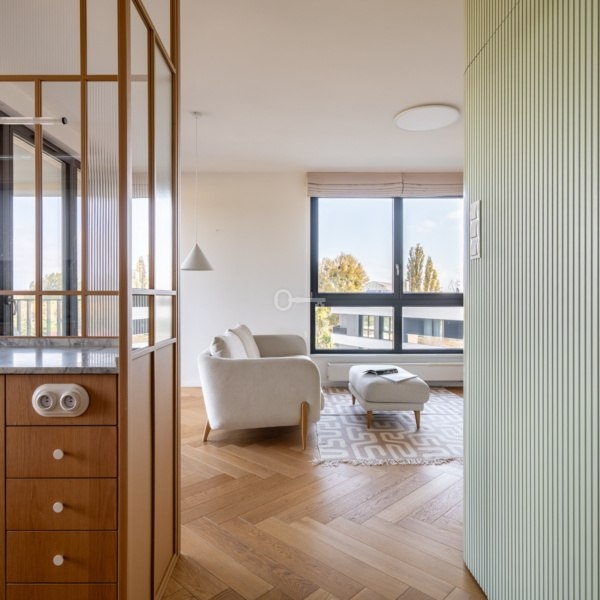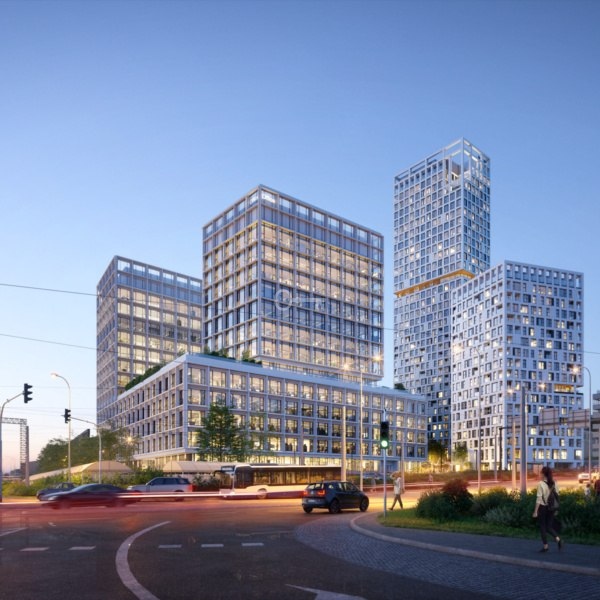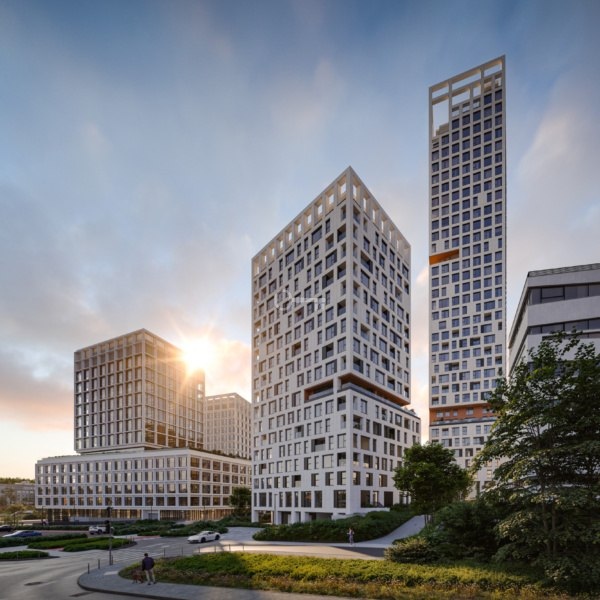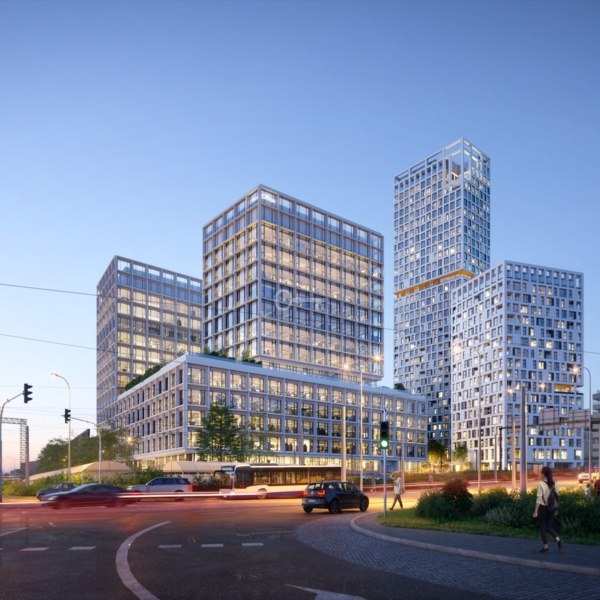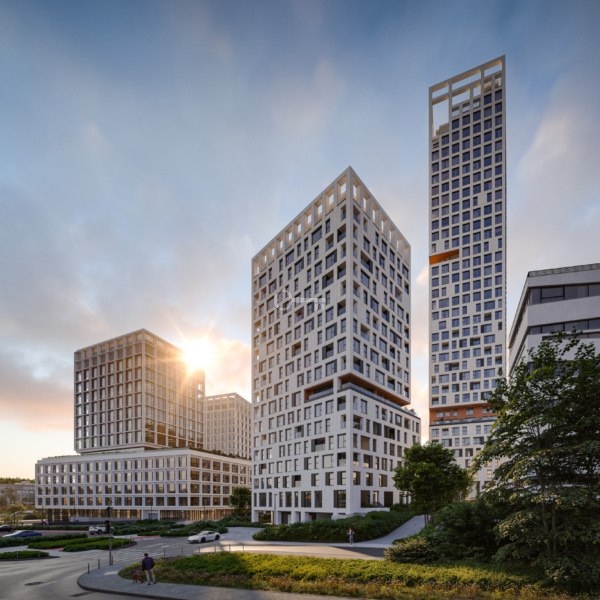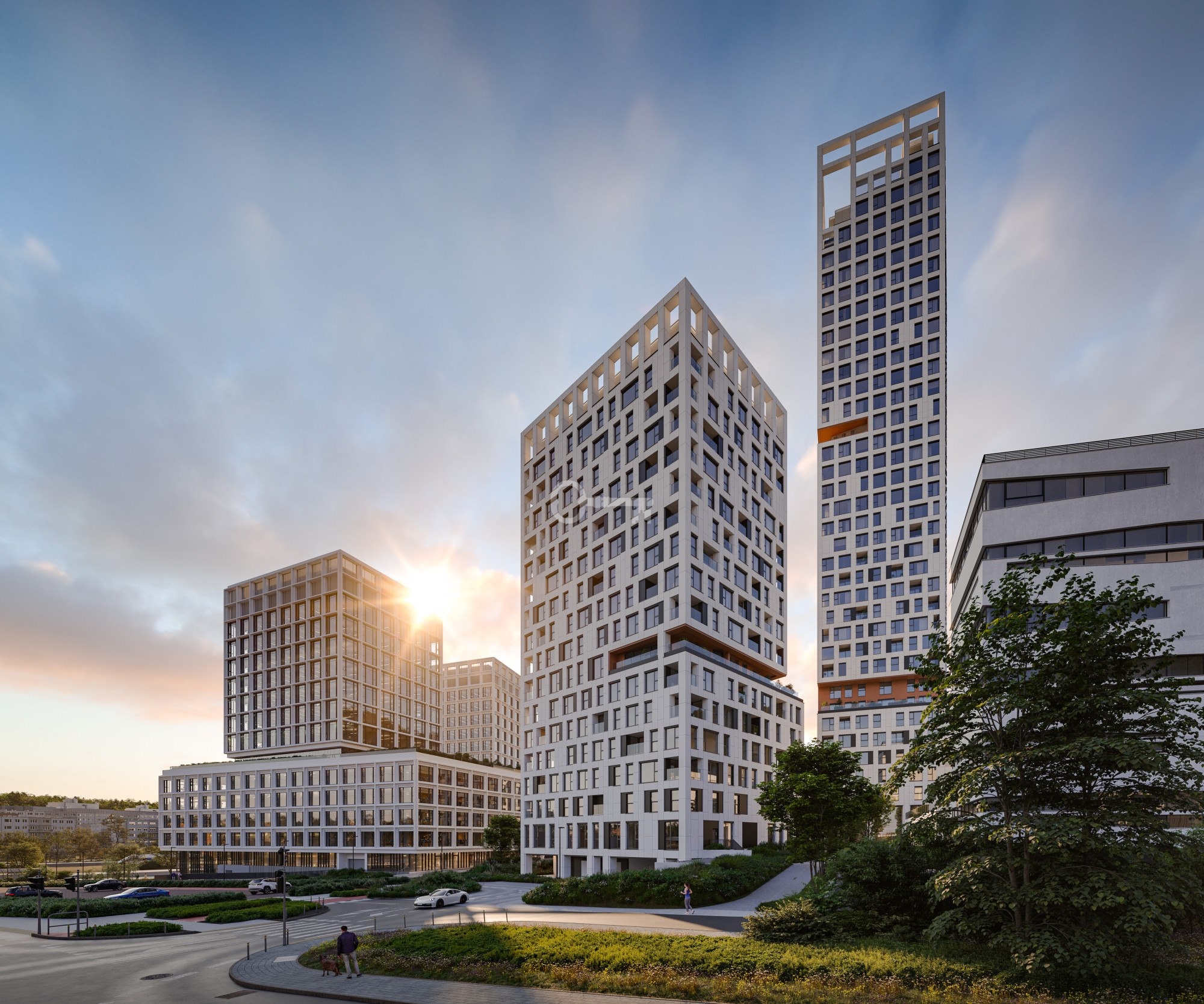It’s the central district of the city. Initially, the area was an agricultural and fishing village, but at the beginning of the 20th century it became a summer holiday village.
The real development came after 1920, when it was under the terms of the Treaty of Versailles
Poland was granted access to the seacoast, and then a decision was made to start the construction of the port. The huge investment was the work of engineer Tadeusz Wendy, who designed and built the port, and Eugeniusz Kwiatkowski – the then minister of industry and trade.
Along with the construction of the port, the area around the “window to the world” was also gaining new face. Simultaneously with the granting of city rights to Gdynia in 1926, the first urban plan was created, which became the foundation for the construction of the city center. When the construction was started, three axles were established. The oldest one was Starowiejska Street, the commercial one was Świętojańska street, and the most representative are today’s streets leading to the sea: 10 Lutego, ościuszki Square and Jana Pawła II Lane with South Pier and Basen Żeglarski. At that time, a compact frontage development was designed, in which the buildings reached a height of 6-7 storeys. Objects that still bring joy to the eyes of both residents and tourists were growing rapidly – the ZUS office building in Gdynia, called the PLO building; the residential building of Bank Gospodarstwa Krajowego or the church at Świętojańska street, built on the ballast stone foundations of the s / s Kentucky ship, which was one of the first to dock at the Gdynia port.
In 1931, the Marine Station was established – it was used to send emigrants who wanted to start a new life in South America.
When a modern city was built, not all buildings lost the battle with time, thanks to which today’s Gdynia Śródmieście is not only modernist projects from the interwar period, but also rural buildings from the settlement times and later – summer houses.
The lightning-fast career of the city and its downtown meant that in 1939 Gdynia was one of the most modern and largest cities of the Second Republic of Poland and proud to have a fully equipped port.
Unfortunately, on 19 September 1929, Gdynia was taken over by the German army, and the port became a Kriegsmarine base. As a result of the shelling of the base by the troops of the Second Belorussian Front in 1945, and earlier Allied air raids, the port suffered enormous losses. After the war, the watercraft submerged in the basins were a big problem, among them
“Schleswig-Holstein”, which started the Second World War.
Fortunately, the representative, administrative and residential part of today’s Gdynia Śródmieście district was not affected.
In February 2015, pursuant to the regulation of the President of the Republic of Poland, Bronisław Komorowski, the urban layout of Gdynia Śródmieście was recognized as a historical monument.
The Gdynia Śródmieście district is clearly divided into the northern, industrial and port part and the representative southern part, which in its coastal part is undergoing huge changes in the 21st century. The areas that were excluded from the urbanization process from the beginning of the port’s existence are gradually absorbed by the city, thanks to which the area known as the waterfront is gradually changing its face. By 2026 Sea City, that is Śródmieście Morskie is to be implemented here.
As part of the planned development estates, openness is assumed, so that residents and tourists can enjoy new places for walking and relaxing, and use the modern marina.
In the eyes of tourists, Gdynia Śródmieście is above all an impressive modernist architecture, the Marina Gdynia yacht marina, the Seaside Boulevard, the Southern Pier, the Emigration Museum and street murals. For residents, Gdynia Śródmieście is a great place to live, and the saturation with trade and services is unheard of. Here you can buy and take care of literally everything – the inhabitants have at their disposal: shoemakers, opticians, dentists, beauty salons, travel agencies, bicycle repair shops, tattoo studios, tailor services, billiard clubs, goldsmiths, pharmacies, photo shops, cafés, bookstores, art galleries, cepelia, funeral parlor, yoga centers, florists, haberdashery, jewelers, massage parlors, purse makers, orthodontic offices, copy shops, banks, drawing schools, drugstores, post offices, salons only for adults, pawn shops, ice cream parlors, restaurants, pubs, purse makers, pizzerias , bakeries, ophthalmologists, internists, a Chinese center, and even waste paper and scrap buying point. Customers are invited to visit stores: grocery, vegetable, footwear, clothing, computer, stationery, liquor, fish, pet, roller blinds, antiques, curtains, wedding dresses, lamps, DIY jewelry, toners, sewing machines, devotional articles, and military. Moreover, at Antoniego Abrahama street, there are more than a dozen exchange offices in the short section between 10 Lutego and Starowiejska streets. It is hardly surprising that the alternative street name is: Kantorowa.
The whole Gdynia small business since 1938 has been “watched over” by the City Market Halls in Gdynia, where you can also buy everything that is needed (and unnecessary) for everyday life, and which attract customers not only from Gdynia.
Gdynia Śródmieście also has its own hospital with a ED – the St. Wincent a Paulo Municipal Hospital.
For those who want to get married, the Registry Office awaits at the Gdynia City Hall.
Gdynia has always been a modern city. It is not surprising then that in Gdynia Śródmieście, at part of Abrahama street, the first woonerf in the agglomeration was commissioned.
Gdynia Śródmieście borders from the north with Oksywie, Obłuże and Pogórze, from the west with Chylonia, Leszczynki and Grabówek, from the west with the Forest Plots and Kamienna Góra, and the eastern border is the Bay of Gdańsk.
Leisure
It is hard to find a second city in Europe whose center lies on the seashore. Gdynia Śródmieście has this privilege, which means that recreational areas are at the fingertips of every resident. The most popular place for walking along the shore, jogging and cycling is the Nowowiejski Seaside Boulevard . In fact, it is located in the neighboring district of Kamienna Góra, but no one feels the difference. It was opened in 1969, is 1500 meters long and connects the downtown beach with Polanka Redłowska, another favorite place of Gdynia citizens.
For lovers of sunbathing and sea bathing there is a 200-meter-long beach (territorially mostly also on Kamienna Góra), with a beach volleyball court, sanitary facilities, a large playground for children, many dining options, a medical point and sunbed rental, and the disabled have a bathing trolley available for transport on the sand.
People who like greenery eagerly enjoy the charms of the Council of Europe Park with Aleja Topolowa, which provides shelter from excess sun rays. A favorite walking place for the inhabitants of Gdynia Śródmieście is also the Southern Pier, with a promenade running through its center – Jana Pawła II Lane.
Water sports enthusiasts are attracted by the largest and most modern marina in Poland, around which there are sailing clubs dedicated to children and adults, charter cruises on the Gdańsk Bay are also possible.
A huge attraction, especially for children, is the Gdynia Aquarium of the Sea Fisheries Institute in Gdynia. It is a place where you can get to know the Baltic ecosystem and admire the most beautiful fish in the world – living and swimming.
Communication
The streets of Gdynia Śródmieście are serviced by buses and trolleybuses, the dense mesh of which allows you to reach all districts of Gdynia and Sopot. An important communication junction is the Gdynia Główna railway station, located 2 km from the sea, serving long-distance trains, SKM and Pomeranian Metropolitan Railway, thanks to which it is easy to get to the airport in Gdańsk.
Education
Gdynia Śródmieście offers the youngest residents several local commune kindergartens, the Navy Kindergarten and the Catholic Kindergarten of the Holy Family.
Montessori method fans at a distance of less than 3 km (from InfoBox – central
point of the district) will find two facilities in the neighboring districts.
There is also no problem with access to local commune schools, including the Sports Complex of General Education Schools (with a primary school and the Secondary School No. VII) and the Complex of Special Schools No. 17. The educational offer of Gdynia Śródmieście also includes the Catholic School Complex of st. John Paul II and Secondary School No. 10.
1.7 km from the InfBox, in the Wzgórze św.Maksymiliana district , there is a prestigious Secondary School No. 3 with bilingual departments, which has been among the country’s leaders for years.
There is a non-public post-secondary school waiting for older youth – the Maritime School in Gdynia, the Provincial Complex of Post-secondary Schools in Gdynia, and the D. Baduszkowa State College of Vocal and Acting , Faculty of Navigation of the Maritime University, Gdynia Film School, University of Social Communication in Gdynia.
For mature residents who want to educate themselves, Gdynia Śródmieście offers TEB Edukacja in Gdynia, which includes medical schools, technical secondary school, high school for adults and the third age academy.
Outside the district, but a short distance from the centrally located InfoBox, there are: WSB University – 1 km
School of Administration and Business – 1.9 km, Maritime University – 3 km.
Culture
The hallmark of Gdynia’s culture associated with Gdynia Śródmieście is the Polish Film Festival, also organized under the name Gdynia Film Festival. During the festival, Polish feature films are shown, and the main prize is “Golden Lions”.
In Gdynia Śródmieście, high culture is promoted by two theaters: Danuta Baduszkowa Musical Theater , existing since 1958 and proud to have the second largest stage in Poland, and the Witold Gombrowicz City Theater, presenting world classics of contemporary drama.
The Midsummer event “Summer begins in Gdynia is extremely popular. “Cudawianki ”, which is accompanied by numerous concerts, artistic activities in public space, and above all on the city beach.
Also in summer, Gdynia Śródmieście invites you to the Ladies’ Jazz Festival, devoted to women and jazz music. Most of the concerts are held at the Musical Theater.
The post-industrial part of Gdynia Śródmieście is decorated with fascinating murals. This is the result of the Traffic Design festival, during which the wall graphics are made by artists from all over the world.
Catering
Gdynia Śródmieście is a place where it’s easy to get a good meal. Numerous restaurants, pubs, dumpling houses, cafés and pizzerias allow you to eat your dream dish. As befits a city by the sea, many places offer fish, including: “Smażalnia ryb Fregata”and “Bar Przystań”.
Part of the restaurant, apart from an excellent menu, also offers excellent views, an example of which is the “Mondo di Vinegre” at the Emigration Museum.
The restaurant “Oberża86”, located in the Abraham House, where the “king of Kashubians” Antoni Abraham lived, serves particularly good Polish and European cuisine.
Gdynia Śródmieście also offers exotic cuisine restaurants, such as “Tokyo Sushi Bar & Restaurant”, “Umi Ramen” or “Malika Restaurant”. For lovers of fast food, “Zupiarnia Gary na Ogniu” and “Pierogarnia Pierożek” have been opened.
And when the inhabitants of Gdynia Śródmieście dream of a walk after a good meal, they often visit the “Wave conductor” – a boy who sits on a concrete platform 40 meters from the shore and “conducts” the waves with a baton connected to a buoy.




